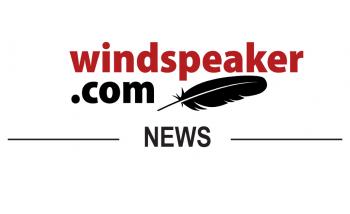Summary
Local Journalism Initiative Reporter
Windspeaker.com
The $62.6 billion balanced 2022 budget presented by the Alberta government this afternoon sets “partnering with Indigenous peoples to pursue opportunities” among the seven objectives noted in the first of three priorities.
However, despite a projected $500 million surplus for the province, the Indigenous Relations ministry will see about a 15 per cent cut from the dollars budgeted in 2021.
The budget for 2022 is set at $181 million. The 2021 budget was set at $214 million, a difference of close to $33 million. However, $196 million is expected to have been spent in 2021.
Absent from this year’s ministry’s budget is the Indigenous Litigation Fund, which a spokesperson said has come to its “natural conclusion” as a grant program. Not a large amount was budgeted at $3 million in 2021 with only $1 million spent. The fund was set up by Alberta to support legal action taken by groups and Indigenous communities to fight for natural resource development. Indigenous groups or communities who chose to fight against natural resource development could not receive monies through the Indigenous Litigation Fund.
The largest cut comes in the Canada Infrastructure program, which is chopped by $18 million. The discrepancy is due to projects having been completed while others are multi-year so funding will carry over from year-to-year to support their construction, said a department spokesperson.
The First Nations Development Fund sees a cut of $10 million due to lower projected casino revenues. Money for the fund comes from a portion of projected revenues from provincially owned slot machines located in First Nation casino. The fund is used for social, economic and community development projects.
A department spokesperson said revenues for the development fund are expected to increase in future quarters.
Funding for Indigenous Women’s Initiatives has been increased by almost $1 million from $1.2 million to $2.1 million. This funding “provides secretariat support to the First Nations and Métis Women’s Councils on Economic Security and leads Alberta’s response to the National Inquiry into Missing and Murdered Indigenous Women and Girls,” according to the ministry budget notes.
This funding will support implementing some or all recommendations put forward by the joint working group to address murdered and missing Indigenous women and girls. A department spokesperson said $1 million has been committed to support this “important initiative.”
While there is no specific budget line for reconciliation efforts, that funding is contained in the $9.75 million that is included under “Strategic Engagement and Policy Innovation,” which includes discussions on the memorial for the victims of Indian Residential School to be located on the legislature grounds, which was promised by the UCP government in the Speech from the Throne.
But the $8 million set aside last year for the Residential Schools Community Research Grant program has not been renewed, with the application deadline having closed on Feb. 15 and all the money expected to be allocated.
The Alberta Indigenous Opportunities Corporation, the provincial Crown corporation started in 2019, maintains its $6 million budget figure, with only $2 million having been spent in 2021. However, as the AIOC will generate its own revenue, such as through loan guarantee fees, it will have an operational budget of $8.475 million.
The 2022 Strategic Plan states as objective six in priority one, “The government will continue to partner with Indigenous Peoples in Alberta in pursuit of reconciliation, inclusion, opportunity and community well-being, including increasing safety for all Indigenous People. We will support opportunities for Indigenous entrepreneurship, community supports, training and employment as well as supporting Indigenous leaders to develop the social and economic programs their communities need.”
There are seven objectives set out by the province in priority one which serves to enhance government services.
Priority two is growing Alberta’s economy and priority three is fiscal sustainability.
Alberta at Work, which is a new component of Alberta’s Recovery Plan, will provide $47 million over three years in capital funding and $25 million over three years in operating funding to support collegiate programs and charter school expansions, creating pathways for students into higher learning and in-demand careers. It also commits $5 million to increase training opportunities for Indigenous peoples.
In 2022-23, Alberta’s total revenue is estimated to be $62.6 billion, which is $0.9 billion higher than the forecast for 2021-22. Commodity prices and investment income is expected to moderate in 2022-23 after significant growth in 2021-22.
Total expense in 2022-23 is $62.1 billion, which is $2.8 billion less than the forecast for 2021-22.
In delivering the budget, Finance Minister Travis Toews said the UCP government had set three fiscal anchors: get per capita spending in line with comparator provinces; keep Alberta’s net debt-to-GDP ratio below 30 per cent; and present a path to a balanced budget.
“We’ve worked hard across ministries to make responsible fiscal decisions and have relentlessly positioned the province for exceptional economic growth and expanded fiscal capacity, and it gives me great pleasure today to present Budget 2022, a balanced budget,” said Toews.
Over the next three years, Alberta will invest $100 million per year to provide additional health-care capacity on a permanent basis, including adding new intensive care unit beds, which will mean reduced surgery wait times.
The budget also includes a $750 million COVID-19 contingency this year, to help address the surgical backlog and ensure the province can cover evolving pandemic-related costs.
Indigenous Relations is the ministry with the smallest budget. Only Energy and Municipal Affairs saw their budgets decrease by a higher percentage.
Local Journalism Initiative Reporters are supported by a financial contribution made by the Government of Canada.

